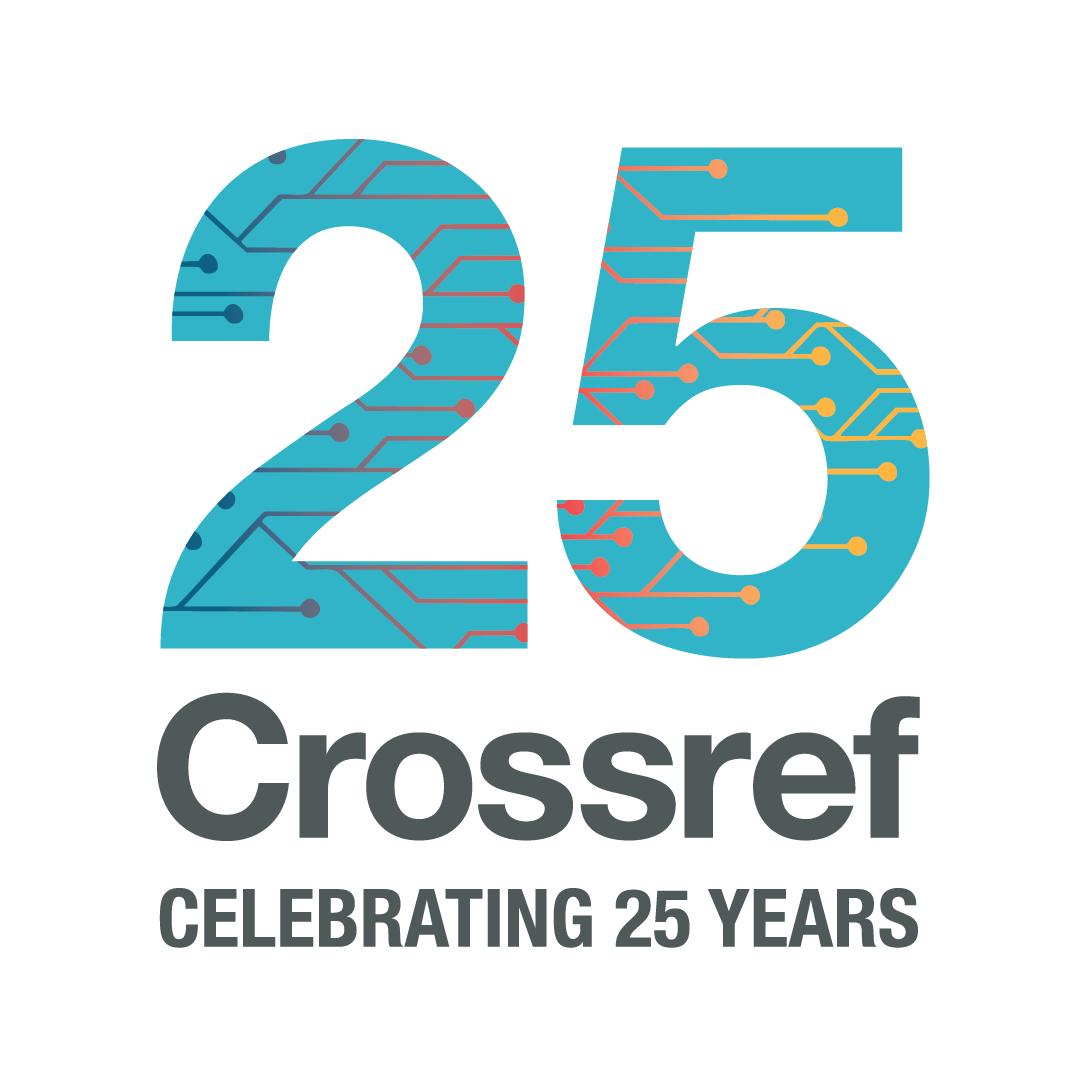9 minute read.Request for proposals: Crossref website information architecture review
We are looking for an organisation to perform an audit of, and propose changes to, the structure and information architecture underlying our website, with the aim of making it easier for everyone in our community to navigate the website and find the information they need.
UPDATE, August 2025: We are partnering with Cazinc and Cactus AI Solutions on this work. Stay tuned for updates on the progress of this project over the coming months. About Crossref
Crossref is a nonprofit membership organisation that exists to make scholarly communications better. We run open infrastructure to link research objects, entities, and actions, creating a lasting and reusable scholarly record that underpins open science and makes research outputs easy to find, cite, link, assess, and reuse.
Together with our 22,000 members in 160 countries, we drive metadata exchange and support nearly 2 billion monthly API queries, facilitating global research communication, for the benefit of society. Our members include research institutions, publishers, libraries, funders, government bodies, and other stakeholders in the scholarly communications ecosystem.
About the Crossref website
We launched the current website in 2016. A few years later, we custom-developed the current Documentation section, moving from a separate site (Zendesk, and prior to that HelpIQ). We subsequently launched a Discourse community forum and actively encourage self-service there. Despite these efforts, we still answered about 50,000 support emails in 2024.
We use the Hugo static site generator, and all the content, assets, and code are open in GitLab. We have dedicated staging and sandbox branches, and use staging for editing instead of the usual git merge requests, and sandbox for testing more substantial code or navigation changes.
We share the responsibility for editing across the teams, with a page owner/author denoted for each page. Most staff use VSCode for editing; we don’t have or need a CMS. We deploy changes to the live site around twice a week. Several custom shortcodes are in place, such as for tables and displaying related information based on tags, or for presentation elements like highlight boxes or columns. We host (many) images and files directly in the repository, rather than using a CDN. We use Algolia for site search, which was chosen because it can support multiple languages.
Current website structure
There are currently four main sections of the website:
- Get involved: this landing page is the most up-to-date with our current positioning and messaging. The section includes how to join as a member and the ways you can participate, obligations and benefits; a welcome page for new members to get started; events and webinars like our annual meeting; special projects or campaigns that need landing pages; fees; programs such as for service providers and ambassadors; global equitable membership; code of conduct; and working groups (which are different from board committees).
- Find a service: listing the purpose and value/benefits for each service, such as content registration, metadata retrieval/APIs/Search, Crossmark, Similarity Check, Grant Linking System, and some other quasi-services that require members to develop or enable something, like reference linking or the Open Funder Registry or ROR.
- Documentation: following more-or-less our “managed member journey” pathway, this includes getting set up, how to create DOI suffixes, how to select the right tool for content registration, how to interpret the various reports that members receive, what to expect in terms of invoicing, schema library and best practices for metadata sharing incl. guidance on principles to follow and sample XML files to edit. Each ‘service’ then has it’s own documentation section too.
- About: governance, including information about our board, committees, and bylaws. Financial information and annual reports. Staff pages, org chart, jobs, and policies incl. employee handbooks. History of Crossref and mission. Under the sub-heading “Operations & sustainability”, there is also detailed information about membership processes such as revocations, managing legal sanctions, member practices, and member offboarding.
Additionally, the website hosts our blog and allows users to sign up for our newsletter, which are two key ways in which we keep our community informed.
Project overview
End goal
We want to allow our community to self-serve with information about what Crossref does, how to become a member, how to use our tools, and how to participate in our programs and services. The Principles of Open Scholarly Infrastructure are central to how we operate, and we want the information about the how, what, and why of Crossref to not only be openly available, but also easy to discover and reuse.
Visitors to www.crossref.org should be offered the information that they are looking for quickly and intuitively. A reduction in the number of help-desk tickets we receive (in 2024 we answered 50,000 of them) would be an indication of an improved self-service website, as would lower bounce rates.
Scope and deliverables
At the end of this information architecture review project, we expect to have agreed on a set of recommendations for tackling the problem statements laid out in the appendix of this document, as well as a plan for how the recommendations should be implemented. This plan will form the basis for an implementation project in 2026. We encourage applications both from organisations who would also be comfortable taking on the implementation project and from those who feel their expertise is specific to the review project described herein.
Specifically, we expect the following deliverables:
- Assessment of key user needs (through analytics and/or user interviews incl. editors)
- Audit and analysis of current site structure and how it serves key user pathways
- Recommendations for content re-architecture, navigation and search improvements
- Strategy for taxonomy and/or tagging system
- Strategy for documentation site setup
- Strategy for information pathways between website, docs, community forum, ticketing systems
- Recommended roadmap for 2026 implementation project
- Nice to have: Wireframes or annotated sitemaps for future site layout
Problem statements
- It is difficult to find information about our services. Even Crossref staff often use search engines to find a page on our website rather than navigating to it or using the built-in search on the website. It’s often not clear whether the information you are looking for is on the “Find a service” page or the “Documentation” page for a given service, and there is no consistent cross-linking between the two groups of pages. There is a search bar prominently placed on the home page, but the search currently only looks for direct matches between the search terms and page contents (with some declensions, stopwords, and fuzziness to allow for typos). We have limited tracking available in Algolia, but can see that in a 7-day span in March 2025, a large portion of searches (78%) returned no results.
- It is difficult to navigate our website. The home page contains some quick links to key pages, but they are not very visible. In order to navigate the website from the home page, users have to expand a hamburger menu which takes up the whole page, and are then presented with an overwhelming amount of options. Once users have left the home page, the way they navigate depends on which section of the website a user finds themselves in: all pages have breadcrumbs going back to Home, while only Documentation pages have a hierarchical sidebar. In order to switch between the basic groups of pages (Get involved, Find a service, Documentation, About us), users have to use the global hamburger menu.
- Our home page doesn’t do a very good job of explaining who we are and what we do. A lot of real estate is taken up by images and recent news items without much context. Bounce rates from the home page are high (65% as of March 2025).
- Our user interfaces and reports are not easily accessible from our website. While we are not a SaaS organisation, there is an established pattern of being able to access an organisation’s services directly from its website (often via a login button at the top right). This is complicated by the fact that we don’t have one single frontend “platform”. In fact we don’t have a single page linking out to the various frontends and interfaces, nor do we have a consistent pattern of linking out to an interface from the documentation page describing how to use it.
- Some of the pages and grouping of pages are outdated and don’t reflect our current priorities or ways of working anymore. For example, the Get involved section still features Special programs and Service providers quite prominently, but the cross-functional programs that shape most of our strategic work now (Co-creation and Community Trends, Contributing to the Research Nexus, Open and Sustainable Operations, Metadata Development) are not represented. Find a service strongly suggests we’re a service provider, whereas most of our services are enabling infrastructure, requiring members to build or act on something. Some more recently created pages don’t fit neatly into any of the current groupings: e.g., API Learning Hub can be found under Get involved and in the home page footer, but doesn’t really belong in either. We also have time-limited, special projects or campaigns like the 25th anniversary of Crossref or the Resourcing Crossref for Future Sustainability project, for which there isn’t a great home. Lastly, we want to host additional content on our website in future, such as our own staff publications; instructions on how to find our codebases and how to contribute to them; how to build technical integrations; how to report bugs; and general best practices in scholarly communications (e.g. in the context of our work on the integrity of the scholarly record), which is not really part of the documentation of our services.
Project budget and timeline
We have a maximum budget of $20,000 allocated to the information architecture review project. The projected timeline is as follows:
- RFP issued: April 17, 2025
- Final deadline for proposals: May 15, 2025
- Shortlisted applicant interviews: May 2025
- Appointment made: June 2025
- Project kick-off: July 2025
- Final deliverables due: October 2025
If you are interested in applying but don’t think this timeline is deliverable for you, please contact us to suggest what would be realistic for you or your organisation before applying.
Proposal submission requirements
Proposals, as well as any questions, should be submitted to Lena Stoll by 15 May 2025.
Please include the following in your proposal:
- Company background and relevant experience with open-source static sites and mission-driven communications
- Case studies or examples of comparable work
- Your approach to the proposed project and how you would structure it
- Team bios and roles incl. typical timezones
- Timeline and milestone estimates
- Proposed budget, including breakdown
- Proposed cadence of check-ins, communications, milestones, and deliverables
- Contact information
Proposal evaluation criteria
We will evaluate proposals based on:
- Demonstrated understanding of our mission and community needs
- Proven experience designing for multilingual and multinational audiences
- Expertise in mission-driven business-to-business communications and information architecture
- Quality of previous work and case studies
- Value for money
We look forward to hearing from you!





